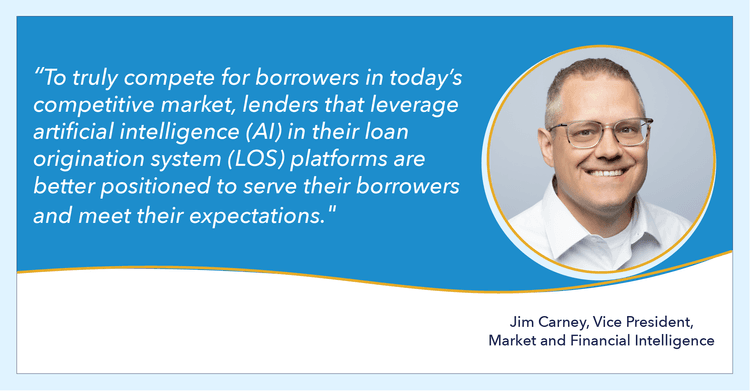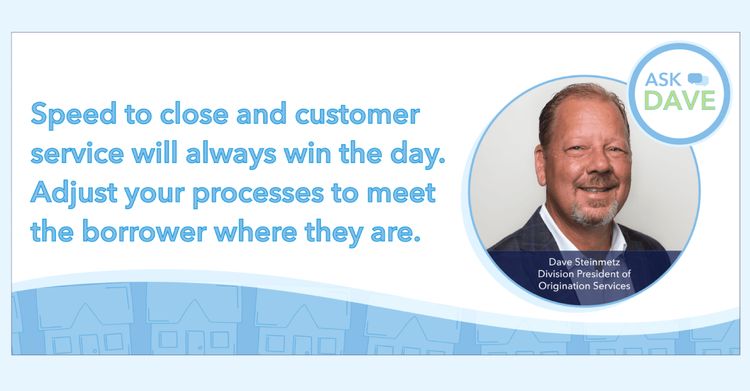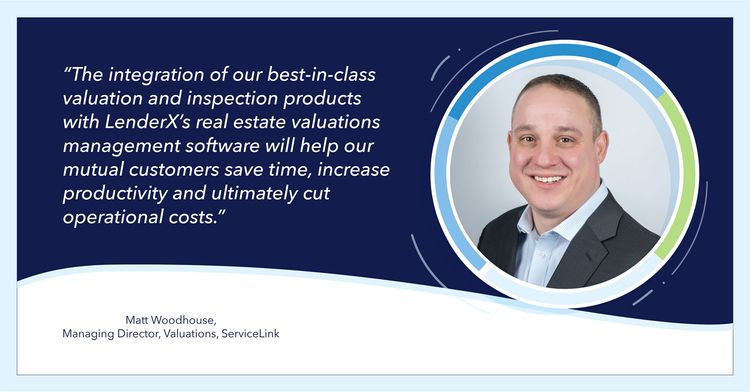What are the typical time requirements of each process within the mortgage lifecycle? What are the “critical path” activities that drive the mortgage timeline and borrower expense? How could fintech be applied to improve efficiency, reduce costs, reduce time requirements, or facilitate equitable outcomes for borrowers?
The mortgage lifecycle is complex and intricate, yet ripe for innovative solutions that prioritize data accuracy and a more streamlined, transparent process. Up until recent years, the steps to obtain a mortgage were bogged down with piles of redundant paperwork. It was a manual process that added days (and often delays) to the homebuying experience. The inefficiency of the manual method underscores recent findings in the 2022 ServiceLink State of Homebuying Report (SOHBR). The SOHBR found that 72% of consumers cited convenience and ease of use as a benefit of using technology in the mortgage process, while another 60% said ‘speed’ was a major benefit of using tech. These, and subsequent findings, suggest that not only do borrowers rely on fintech, but they expect it as part of today’s homebuying experience.
Critical Path Activities
In a relatively balanced housing market, the typical timeline from application to closing takes anywhere from 30-45 days, depending on the type of the loan. After the application is submitted and a contract is executed, the mortgage underwriting process begins. While a clear-to-close title commitment can be produced in a day, more complex properties that have liens or HOA requirements can take up to 30 days to produce a clear title. This is why it’s important to have a trusted title provider that uses tech-enabled solutions to quickly identify and remediate any clouds on the title. The actual appraisal of the property only takes hours, but contacting the appraiser, scheduling an appointment and waiting for the report can often add days to the timeline. Finally, the compilation of the closing documents can take a few days and must be reviewed for accuracy before the signing. Due to various touchpoints with multiple vendors and personnel throughout the process, inaccuracies in documentation or a lack of response from a third-party can cause significant slowdowns and impact the closing timeline.
One of the most frustrating aspects of the homebuying process, as found in the SOHBR, is repeated requests for information or submission of documents that had already been provided. When asked what borrowers would change about the homebuying process, 36% said they wanted less paperwork, 26% said they didn’t want to provide the same documentation multiple times and 24% wanted more transparency around fees. These same three factors ranked highly in the 2021 SOHBR, which suggests that buyers are looking for the process to be less burdensome and more transparent.
Applying Fintech
The good news is, digitization of the mortgage process continues to evolve, and more innovation is on the horizon. Fintech companies have heard consumers’ collective complaints and are targeting their solutions appropriately. For example, the application process has gone digital, and in many instances, lenders have adopted eSign capabilities. The ability to electronically sign sensitive documents remotely has been well received by borrowers. SOHBR data shows that almost nine in ten, (89%) say that eSignatures are easy and convenient and 88% agree that eSignatures save time in large transactions like obtaining a mortgage.
Another much-needed advancement that saves time and money is the addition of digital scheduling tools. ServiceLink, for example, has launched its proprietary EXOS Scheduling technology that gives the lender or borrower the ability to schedule an appointment with a specific appraiser or closing agent for an exact date and time that works for them. In return, they’re provided with the agent’s name, photo and make and model of their vehicle for the purposes of safety and identification. This platform effectively reduces the amount of time it takes to schedule these appointments and provides a direct line of communication to the provider. This technology, as indicated by internal findings, has been proven to cut appraisal turn times in half.
SOHBR data supports the notion that borrowers are interested in using technology to take a more hands-on role in their transaction. Some 83% say they would self-schedule their closing appointment if the option was available. For those who do utilize this feature, internal data shows that 75% of closings are scheduled within four hours and 90% are scheduled within one day. The self-serve option also reduces the need for re-scheduling by 90%, thus saving time within the overall transaction.
It’s clear that today’s borrowers are eager to both use and reap the benefits of mortgage technology. Fintech leaders play a major role in the forward progress of the mortgage lifecycle and will continue to do so as long as there’s a focus on developing tools that provide efficiency and cost savings, while giving consumers additional layers of transparency into the process.
What are the typical drivers of repetitive requests to borrowers or re-evaluation of underwriting information by the lender in the mortgage process, and what opportunities exist to automate processes?
For borrowers, one of the most frustrating aspects of obtaining a mortgage is their lenders’ repeated requests for the same documents. The 2022 ServiceLink State of Homebuying Report (SOHBR) found that when asked what consumers would change about the homebuying process, 36% said they wanted less paperwork, while 26% said they didn’t want to provide the same documentation multiple times.
Information is essential to the lending process and lenders have to consider multiple layers of data in order to make an informed decision before issuing a mortgage. Lenders need to verify that the borrower does indeed have the financial fortitude to pay back their loan. In other words, the numbers must add up. This careful and tedious underwriting process means that borrowers will be asked, sometimes repeatedly, to fill in the gaps of any financial information that may be inaccurate or missing. Ultimately this information gathering process helps to strengthen their profile, but to the borrower, it can be burdensome.
Much information is needed just to begin the homebuying journey; the borrowers’ financial statements, paystubs, proof of employment, W-2s, credit reports, gift fund documentation and more. Providing some of this information requires quite a bit of effort on the part of the borrower. If the documents they supply are not easily legible, incomplete, or sent in an incorrect format, the lender may ask for them to be submitted again. Due to the cascading nature of the mortgage underwriting process, this small snag has the potential to impede progress on the loan. Even within the lender’s internal team, it’s possible for communication gaps to arise or uploading errors to occur, leading to additional requests for borrower information.
Opportunities to automate
For the 36% of buyers in the SOHBR who said they want less paperwork throughout the homebuying process, fintech leaders are already serving up solutions. There’s been a concerted effort over the past decade to fully digitize the mortgage process from end-to-end. Depending on the lender and their tech stack, everything from the application to the closing table now has a digital component. Although documentation is a lengthy and necessary part of the mortgage process, the evolution of eSigning technology has made it a much more manageable task. The dozens of documents that would normally be signed at the closing table are now able to be executed electronically in advance, leaving only those that require a ‘wet signature.’ There is certainly an appetite for this type of advancement. Data from the SOHBR shows that 79% of homeowners expressed interest in using eSignatures specifically for mortgage applications.
Fintech solutions are also being refined to address repeated requests for documentation, among other things. To truly compete for borrowers in today’s competitive market, lenders that leverage artificial intelligence (AI) in their loan origination system (LOS) platforms are better positioned to serve their borrowers and meet their expectations. While AI has been around for years, lenders were slow to implement this technology early on due to the cumbersome and complex adoption process. That has changed. Today, AI and predictive analytics are the driving force behind many lenders’ pipelines mainly due to the technology’s ability to automate processes, maintain compliance, improve transparency and reduce turn times.
For example, AI can be used to automatically import borrower information from sources like financial institutions and other agencies. This automation reduces the potential for human error (via manual data entry) and identifies gaps in information necessary for the underwriting process. Should it detect an issue on the file, the technology alerts the lender and triggers a cascade of tasks to rectify it. This rules-based approach helps to ensure accuracy of data while keeping the pipeline flowing. The time savings aspect of leveraging this kind of technology also allows lenders to spend more time nurturing their borrower and providing that all-important customer experience.
While many areas of the underwriting process are automated today, there is always room for refinement. Protecting the accuracy and integrity of the data, while remaining in compliance with the changing regulatory guidelines, should remain a top priority. Fintech solutions that deliver these elements are not only necessary to stay competitive, but it’s what today's borrowers expect.


